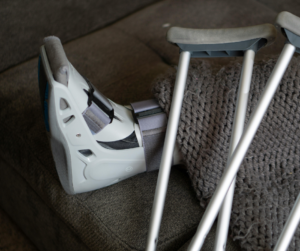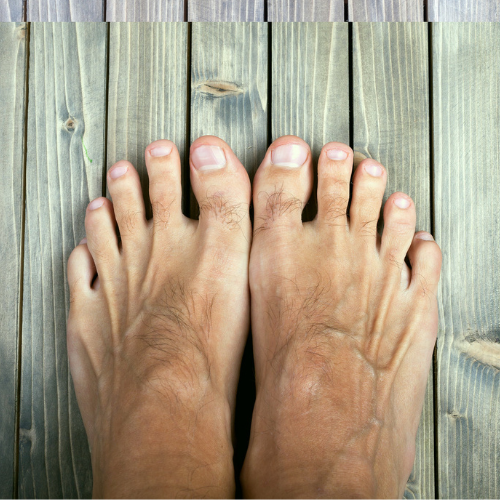 Foot pain is a common complaint to which nearly everyone can relate. Though some may only experience it after a great trek through the wilderness or when breaking in new shoes, others may have chronic pain and discomfort that they just can’t solve. Many people are unaware that their feet may not be properly aligned leading to foot pain and a variety of secondary conditions that can affect the rest of their bodies and quality of life.
Foot pain is a common complaint to which nearly everyone can relate. Though some may only experience it after a great trek through the wilderness or when breaking in new shoes, others may have chronic pain and discomfort that they just can’t solve. Many people are unaware that their feet may not be properly aligned leading to foot pain and a variety of secondary conditions that can affect the rest of their bodies and quality of life.
What are Misaligned Feet?
When you stand straight and face forward, your ankle bone should rest over the front edge of your heel bone creating a space known as the sinus tarsi. Misaligned feet is a condition in which the instability of your ankle bone causes it to slip out of place and collapse or compress the sinus tarsi. This misalignment can cause your ankle to turn inward while your forefoot turns outwards and affects balance throughout your body.
Injuries can also cause your ankle to shift out of alignment as well as overuse and genetics. When the ankle rolls out of alignment, pain can occur as your body tries to distribute your weight evenly despite being out of balance. This can lead to pain not only in your feet and ankles but throughout your leg and lower back. Oftentimes, patients will also notice exterior signs such as the bowing of the ankle inward when standing straight with their feet facing forward.
Symptoms
Misaligned feet can lead to a variety of symptoms and secondary conditions including:
- Arch pain
- Bunions
- Calluses
- Flat feet
- Hammertoes
- Heel pain
- Overpronation
- Plantar fasciitis
- Underpronation/Supination
Your feet work to distribute the weight of your body and help you maintain balance as you move. If your feet are misaligned, your body will try to compensate for the lack of balance and put a strain on other areas of your body creating ankle pain, knee pain, shin pain, hip pain, and pain in the lower back. The longer the imbalance is allowed and left untreated, the more tension is placed on these muscles, eventually training them to function improperly.
Signs You Can Look For
If you have some of the symptoms mentioned above but want a little more evidence, there are a few signs you can look for on your own before going to see a podiatrist. One way to see if you have any misalignments within your feet is to look at the wear patterns on your shoes. Areas of wear can indicate places that are under the most pressure. If the wear patterns are uneven on the sides of your shoes, it is a good indication that your feet are not properly aligned.
An easy way to tell is by looking at your footprint! Wet your feet and walk on a dry surface such as cement or concrete to tell what areas of your feet touch the ground. Patters on the inside may suggest an overpronation, while heavy prints on the outside may lean towards excessive pressure placed on the sides of your feet. For an official diagnosis, we strongly recommend you come into our office for an evaluation.
Treatment Options
If you suspect a misalignment, please seek a proper diagnosis and treatment from your podiatrist. Misalignment is not a condition that will heal itself or improve in time, and it will only worsen in degrees the longer treatment is postponed. For minor cases, stretches designed to strengthen the muscles and joints of the feet, ankles, and calves can be beneficial. Custom orthotics, splints, and braces can also help to stabilize your ankle during physical activity.
The only corrective option is surgery. During this minimally invasive procedure, a titanium stent is inserted into the natural gap or sinus tarsi to keep your ankle bone in proper alignment. There is no drilling or screwing involved. This procedure is often performed on an outpatient basis and only requires a short recovery period.
If you have foot pain that is keeping you from the activities you enjoy, don’t keep silent. Instead, contact our office so that we can treat the root of your discomfort and pain and get you back onto your feet. For more information on misaligned feet or to schedule an appointment, contact Foot and Ankle Centers today.







